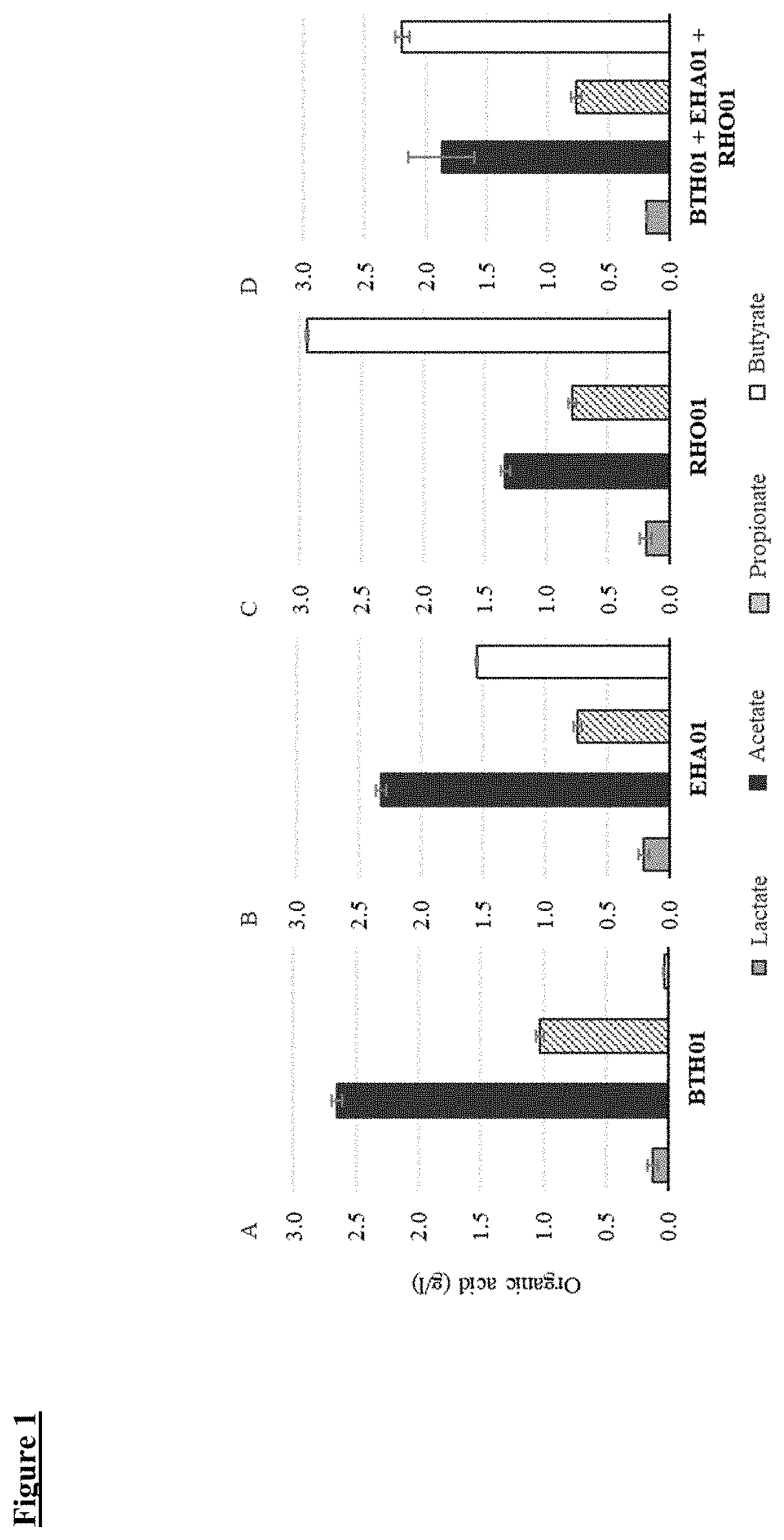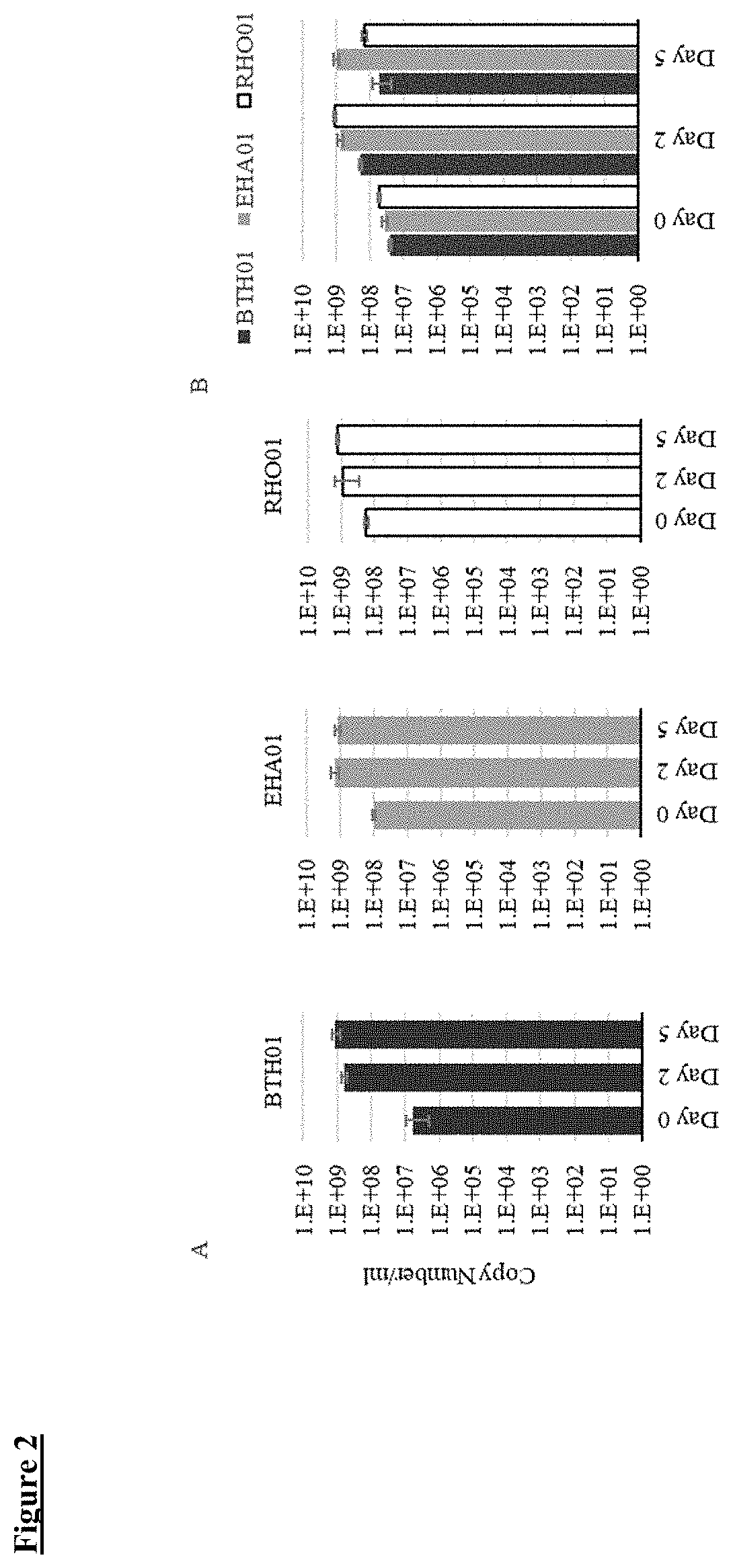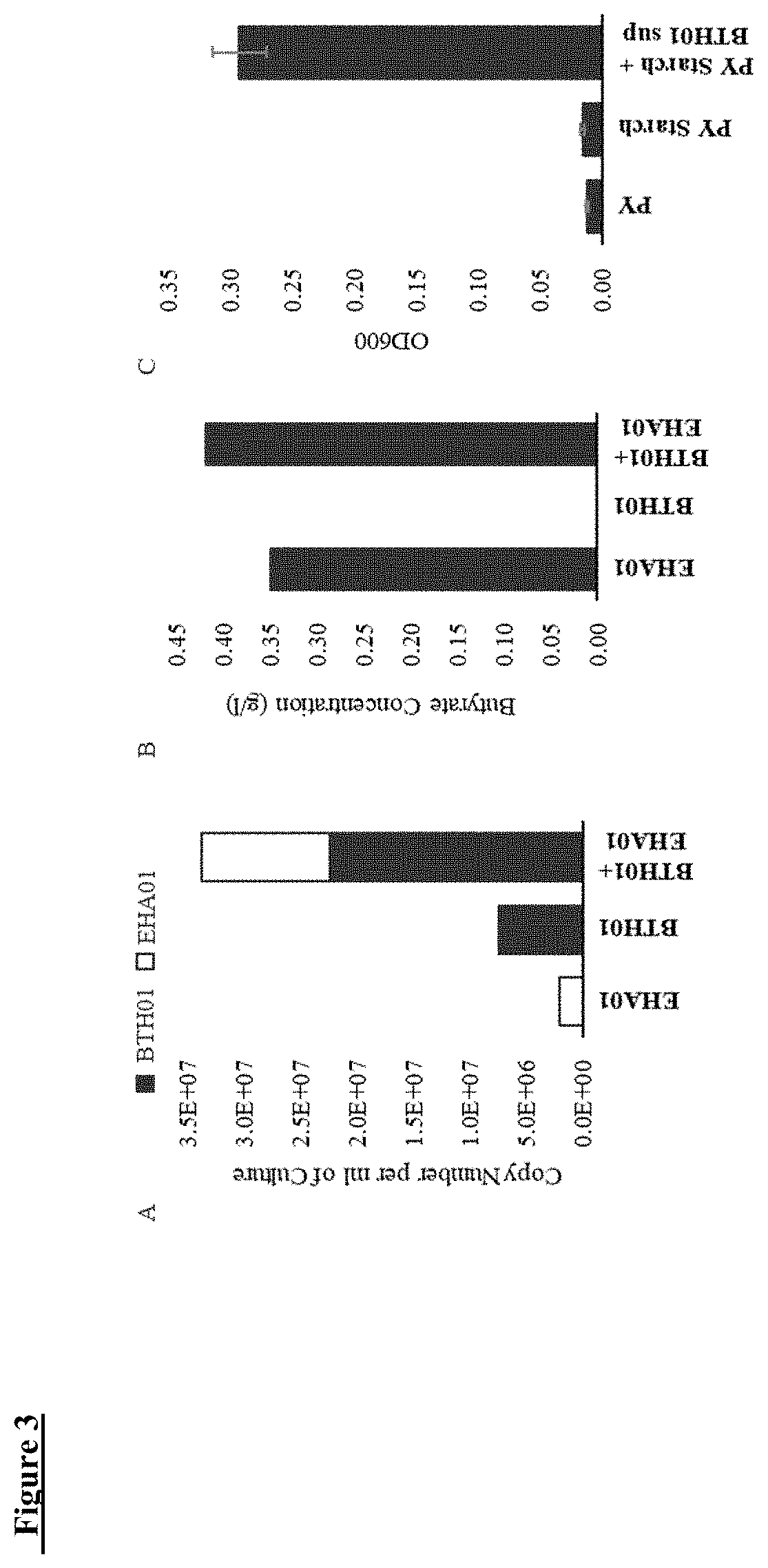Methods and compositions for treating gastrointestinal and inflammatory disorders
a technology for applied in the field of methods and compositions for treating gastrointestinal and inflammatory disorders, can solve the problems that mild-to-moderately active patients with uc do not adequately respond to first-line treatment, and achieve the effects of increasing the production of at least one anti-inflammatory gene product, reducing or attenuating the production of at least one pro-inflammatory gene product, and reducing or preventing the disruption of the barrier integrity of a human cell
- Summary
- Abstract
- Description
- Claims
- Application Information
AI Technical Summary
Benefits of technology
Problems solved by technology
Method used
Image
Examples
example 1
of Bacterial Strain Selection Process for Consortium 1 (C1)
[0169]Consortium 1 (C1), a live biotherapeutic product for development as a treatment for gastrointestinal disorders, for example, dysbiosis and / or immune mediated inflammatory disorders, such as ulcerative colitis, Crohn's disease, and other forms of inflammatory bowel disease (IBD), comprises a consortium of three bacterial strains, namely Bacteroides thetaiotaomicron BTH01, Eubacterium hallii EHA01, and Roseburia hominis RHO01.
[0170]Candidate bacterial strains of interest were isolated from healthy donor stool samples, purified and characterized using standard anaerobic microbiological procedures. All stool donors underwent comprehensive clinical and laboratory testing to confirm healthy status including screening for infectious agents to minimize risk of transmissible infection. Serology screening included HIV-1 / HIV-2 (IgG and EIA), HTLV-I and HTLV-II (Ab), Hepatitis A virus (IgM), Hepatitis B virus (HBSAg, anti-HBc IgG ...
example 2
and Phenotypic Characterization of C1 Bacterial Strains
[0173]A live biotherapeutic product, Consortium 1 (C1), was prepared by mixing three bacterial strains, namely BTH01, EHA01, and RHO01. Table 1 shows some of the physiological and metabolic characteristics of the C1 bacterial strains BTH01, EHA01 and RHO01. Gram staining of the three C1 bacterial strains showed EHA01 to be Gram positive, whereas, both BTH01 and RHO01 are Gram negative. All three strains are obligate anaerobes.
[0174]In order to investigate characteristics often found to be different among the strains of same bacterial species, analysis of carbon source utilization was performed for the C1 bacterial strains. The BTH01, EHA01 and RHO01 strains were evaluated for their ability to metabolize 190 carbon and 95 nitrogen sources using phenotypic microarrays (Biolog, Hayward, Calif.). As indicated in Table 1, BTH01 appeared to be most versatile in utilizing 34 unique carbon sources whereas EHA01 appeared to be least vers...
example 3
ome Sequencing (WGS) Analysis of C1 Bacterial Strains
[0179]Illumina® WGS of each bacterial strain genome (BTH01, EHA01 and RHO01) was performed to confirm taxonomic identity, and to evaluate the genomic evidence for the presence of antibiotic resistance genes, virulence factors and toxins, including evidence of associated mobile genetic elements.
PUM
| Property | Measurement | Unit |
|---|---|---|
| pH | aaaaa | aaaaa |
| pH | aaaaa | aaaaa |
| pH | aaaaa | aaaaa |
Abstract
Description
Claims
Application Information
 Login to View More
Login to View More - R&D
- Intellectual Property
- Life Sciences
- Materials
- Tech Scout
- Unparalleled Data Quality
- Higher Quality Content
- 60% Fewer Hallucinations
Browse by: Latest US Patents, China's latest patents, Technical Efficacy Thesaurus, Application Domain, Technology Topic, Popular Technical Reports.
© 2025 PatSnap. All rights reserved.Legal|Privacy policy|Modern Slavery Act Transparency Statement|Sitemap|About US| Contact US: help@patsnap.com



